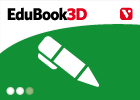Cargando...
Recursos educativos
-
Nivel educativo
-
Competencias
-
Tipología
-
Idioma
-
Tipo de medio
-
Tipo de actividad
-
Destinatarios
-
Tipo de audiencia
-
Creador
Lo más buscado
- Historia de Euskal Herria
- Ejercicios de inglés quinto primaria
- ejercicios matemáticas imprimir
- ejercicios ortografía
- matemáticas primaria
- Inventos de máquinas
- Fichas ortografía
- Experimentos de botánica
- Ahorrar agua
- Repaso de sintaxis
- Animales selvajes
- Lecturas interactivas
- método lectoescritura
- Letras para recortar
- Uso de c, s y z
-

Introduction - Plant reproduction
EduBook Organización
- 7299 visitas
Living things can reproduce. They use one or several of their cells to make organisms similar to themselves. There are two types of reproduction in plants and animals: asexual reproduction and…
-

Before you start - Plant reproduction
EduBook Organización
- 6695 visitas
Living things can reproduce. They use one or several of their cells to make organisms similar to themselves. There are two types of reproduction in plants and animals: asexual reproduction and…
-

Contesta. Les neurones i els actes nerviosos
EduBook Organización
- 6495 visitas
Recorda el que has treballat en aquest apartat i contesta: Com s'anomena la prolongació més llarga d'una neurona? Quines neurones formen els nervis? Quines formen els centres nerviosos? Quines…
-

Remember - Plant reproduction
EduBook Organización
- 6312 visitas
Living things can reproduce. They use one or several of their cells to make organisms similar to themselves. There are two types of reproduction in plants and animals: asexual reproduction and…
-

Investigate - Plant reproduction
EduBook Organización
- 6279 visitas
Living things can reproduce. They use one or several of their cells to make organisms similar to themselves. There are two types of reproduction in plants and animals: asexual reproduction and…
-

Introducció - Percepció i moviment
EduBook Organización
- 6255 visitas
Els òrgans dels sentits constitueixen la finestra a través de la qual el nostre cos rep la informació del medi que l'envolta. L'ull i l'orella són molt complexos i ens permeten…
-

The motor system
EduBook Organización
- 1 lo usan
- 5997 visitas
We interact We interact with the world around us. To do this, we use: The motor system. Our bones, muscles and joints allow us to move from place to place. The sensory organs. Our senses help us…
-

Contesta. Els ocells
EduBook Organización
- 6103 visitas
Recorda el que has treballat en aquest apartat i contesta: Completa aquestes frases: Les extremitats dels ocells se'ls han transformat en …… . La temperatura del cos dels ocells és …… . El…
-

Activitats finals - Percepció i moviment
EduBook Organización
- 5770 visitas
Els òrgans dels sentits constitueixen la finestra a través de la qual el nostre cos rep la informació del medi que l'envolta. L'ull i l'orella són molt complexos i ens permeten…
-

True/False. The nervous system
EduBook Organización
- 5698 visitas
Are these sentences true or false? The central nervous system consists of two organs: the brain and the spinal cord. The brain is also called the cranium. The human nervous system has two main parts:…
Te estamos redirigiendo a la ficha del libro...













